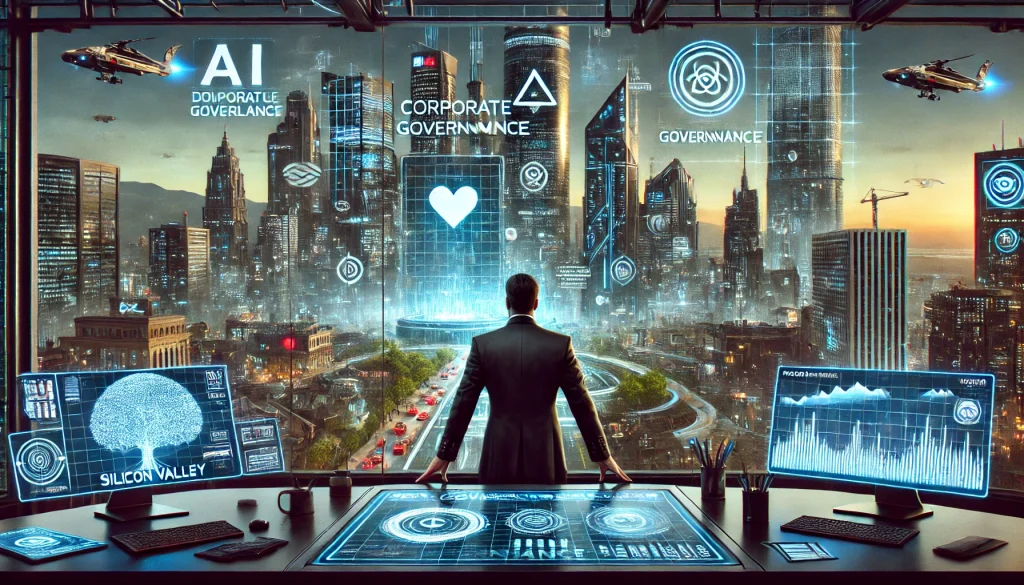In our first exploration of neocameralism and techno-authoritarianism, we examined how Silicon Valley elites are increasingly embracing anti-democratic ideas. Now we turn to the intellectual architect behind much of this thinking: Curtis Yarvin, whose critique of democracy has become increasingly influential among tech industry leaders and certain segments of the political right. His work represents perhaps the most sophisticated and influential critique of democratic governance to emerge in the digital age.
The Cathedral: Power Without Accountability
Central to Yarvin’s critique of modern democracy is his concept of “the Cathedral” – perhaps his most influential and widely adopted idea. The Cathedral, in Yarvin’s analysis, is not a conscious conspiracy but rather a distributed system of power that maintains progressive democratic orthodoxy through aligned incentives and shared ideological frameworks. Understanding this concept is crucial because it forms the foundation for much of his broader critique of democratic governance1.
The Cathedral, as Yarvin describes it, encompasses elite universities, mainstream media organizations, the permanent bureaucracy, non-profit organizations, and progressive activist networks. These institutions, he argues, work together not through explicit coordination but through shared assumptions and mutually reinforcing incentives. A professor publishes research suggesting a particular policy approach; journalists cite this research in articles advocating for change; activists organize around these articles; bureaucrats implement policies based on this pressure; and academics study and validate the results, beginning the cycle anew.
What makes the Cathedral particularly insidious, in Yarvin’s view, is that it exercises tremendous power while maintaining the fiction of democratic accountability. The real decisions, he argues, are made not through formal democratic processes but through the complex interplay of these institutions, which shape public opinion and policy without any direct accountability to voters. The average citizen might vote for representatives, but those representatives operate within an ideological and policy framework largely determined by Cathedral institutions2.
This framework has proven particularly appealing to tech industry figures who often find themselves at odds with media criticism, regulatory oversight, and public backlash. It provides a sophisticated explanation for why their apparent power feels constrained by forces they can’t directly control or confront. When tech leaders face criticism over privacy practices or labor policies, they can frame this not as legitimate democratic discourse but as Cathedral enforcement of progressive orthodoxy.
The Systematic Critique of Democratic Governance
Beyond his analysis of informal power structures, Yarvin presents a fundamental critique of democratic governance itself. His argument begins with the observation that democracy creates systematic inefficiencies by disconnecting power from responsibility. When everyone is theoretically responsible for decisions, no one is actually accountable for outcomes. This leads to what he terms “distributed irresponsibility” – a situation where bad decisions can be made without any individual bearing the consequences3.
Consider, Yarvin argues, how policy failures are handled in democratic systems. When a government program fails to achieve its objectives, responsibility is diffused across multiple agencies, legislative bodies, and administrations. No single person or entity bears the full consequence of failure, and therefore no one has sufficient incentive to ensure success. This contrasts sharply with corporate governance, where CEOs and executives face direct consequences for poor performance.
Furthermore, Yarvin contends that democratic systems inevitably devolve into competition for special privileges and resources rather than serving the common good. He points to phenomena like regulatory capture and interest group politics not as unfortunate aberrations but as inevitable features of democratic governance. When decisions are made through political processes, he argues, the outcome will always favor those most skilled at political maneuvering rather than those most capable of effective governance.
This critique extends to the fundamental premise of voter competence. Yarvin argues that most citizens lack the knowledge, expertise, or incentive to make informed decisions about complex policy issues. This leads to what he calls “low-information democracy,” where decisions are made based on emotional appeals and superficial understanding rather than substantive analysis. The result, he contends, is governance by sound bite and sentiment rather than reason and expertise4.
Historical Context and Intellectual Foundations
Yarvin’s critique doesn’t emerge from nowhere – it draws on a long tradition of reactionary thought that challenges democratic legitimacy. His work explicitly references thinkers like Thomas Carlyle, who argued for governance by natural aristocrats rather than democratic masses. This intellectual lineage is crucial for understanding both the appeal and limitations of Yarvin’s arguments5.
The influence of Carlyle is particularly evident in Yarvin’s belief that society naturally produces a hierarchy of capability and intelligence, and that attempting to impose democratic equality on this natural hierarchy creates dysfunction. Like Carlyle, Yarvin sees democracy not as a triumph of human political evolution but as a destructive fiction that prevents the most capable from exercising proper authority.
What makes Yarvin’s contribution unique is how he updates these traditional critiques for the digital age. He argues that modern technology and organizational systems have made the flaws of democracy more apparent and more dangerous. The complexity of modern society, in his view, makes democratic governance increasingly untenable. When decisions require deep technical understanding of subjects like artificial intelligence, genetic engineering, or financial systems, how can we expect the average voter to make informed choices?
The Corporate Model as Alternative
Yarvin’s criticism of democracy is inextricably linked to his vision of an alternative: governance modeled on corporate structures. This connection is crucial because it helps explain why his ideas have found such resonance in Silicon Valley. In Yarvin’s ideal system, states would operate more like tech companies, with clear lines of authority, direct accountability for outcomes, and technical rather than political decision-making processes6.
This vision appeals to tech industry leaders who have experience running large organizations with minimal democratic input. They see the efficiency of corporate decision-making structures and wonder why governance can’t operate the same way. A CEO can make decisive changes to company policy without polling employees or building political coalitions. Why, they ask, shouldn’t governance work similarly?
The corporate model also appeals because it provides a familiar framework for thinking about complex organizational problems. Tech leaders understand metrics, optimization, and efficiency. They’re comfortable with hierarchical decision-making structures and performance-based accountability. Yarvin’s proposal to apply these principles to governance feels natural to those who’ve succeeded in corporate environments.
Impact on Contemporary Political Thought
The influence of Yarvin’s critique extends far beyond his direct readership. His ideas have helped shape a broader discourse about the limitations and potential alternatives to democratic governance. This influence manifests in several important ways that deserve careful examination7.
First, his concept of the Cathedral has become a widely used framework for understanding and criticizing institutional power, even among those who may not fully embrace his broader philosophy. The term provides a useful shorthand for describing how institutional consensus forms and perpetuates itself, particularly in ways that seem resistant to democratic pressure.
Second, his technical approach to governance – treating it as an engineering problem rather than a political one – has influenced how many tech industry figures think about social problems. This has led to increased interest in algorithmic governance and technical solutions to political challenges.
Third, his criticism of democratic inefficiency has provided intellectual ammunition for various anti-democratic movements and proposals. When political figures argue for restricting voting rights or concentrating executive power, they often echo (knowingly or not) Yarvin’s critiques of democratic governance.
Theoretical Weaknesses and Limitations
Despite its influence, Yarvin’s critique contains significant theoretical weaknesses that deserve examination. His analysis often overstates the coherence of institutional power, understates the complexity of human motivation, and ignores successful examples of democratic governance. Perhaps most significantly, his critique fails to adequately address how his proposed alternatives would avoid the problems of corruption, abuse, and inefficiency that he identifies in democratic systems8.
The corporate model that Yarvin proposes as an alternative to democracy itself contains numerous flaws and contradictions. Corporate governance works in part because it operates within a broader framework of law and regulation – the very democratic institutions Yarvin criticizes. Moreover, the history of corporate governance includes numerous examples of corruption, inefficiency, and failure, suggesting that simply adopting corporate structures wouldn’t solve the problems Yarvin identifies in democratic systems.
Furthermore, Yarvin’s analysis often seems to ignore or minimize the actual historical record of non-democratic governance. His idealized vision of corporate-style governance overlooks the numerous examples of authoritarian systems that proved both inefficient and oppressive. The historical record suggests that concentrating power often leads to exactly the kinds of problems Yarvin identifies in democratic systems, just in different forms.
Contemporary Relevance and Future Implications
Understanding Yarvin’s critique of democracy is crucial for several reasons. First, his ideas are increasingly influential among some of society’s most powerful actors. Tech industry leaders and political figures are increasingly adopting aspects of his analysis, even if they don’t embrace his complete philosophy9.
Moreover, his technical approach to governance aligns with broader trends toward algorithmic decision-making and digital control. As artificial intelligence and data analytics play larger roles in governance and administration, Yarvin’s vision of technical rather than political decision-making becomes increasingly relevant.
His critique also identifies real problems with democratic governance that deserve serious consideration, even if we reject his proposed solutions. Issues like voter competence, institutional accountability, and systemic inefficiency remain significant challenges for democratic societies. Finding ways to address these issues while preserving democratic values is one of the key political challenges of our time.
Looking Forward
As we continue to grapple with the challenges of governance in the digital age, Yarvin’s critique will likely remain influential, particularly among tech industry leaders. Understanding his arguments – both their appeal and their limitations – is crucial for defending and adapting democratic institutions to contemporary challenges10.
The question isn’t whether Yarvin’s critique is entirely right or wrong, but rather what it reveals about the vulnerabilities of democratic systems and the attractions of technocratic alternatives. As we move forward, we must find ways to address these challenges while preserving the essential values of democratic governance.
This task becomes particularly urgent as technological capabilities expand and corporate power grows. The temptation to embrace technocratic solutions to political problems will likely increase, making it essential to understand and critically engage with critiques like Yarvin’s. Only by understanding these challenges can we hope to preserve and strengthen democratic institutions for the digital age.
Footnotes
- Yarvin, Curtis. “A Gentle Introduction to Unqualified Reservations.” Unqualified Reservations (blog), 2009. ↩
- This analysis draws on social theorist Michel Foucault’s concepts of distributed power, though Yarvin applies them differently. ↩
- Yarvin, Curtis. “Why Democracy Fails.” Unqualified Reservations (blog), 2007. ↩
- This critique echoes earlier work by political theorists like Joseph Schumpeter, though with a more technological focus. ↩
- Carlyle, Thomas. “Shooting Niagara: And After?” (1867) is frequently cited in Yarvin’s work. ↩
- Recent research in organizational studies has examined this growing influence of corporate models on governance thinking. ↩
- The influence of Yarvin’s ideas on contemporary political movements is documented in several recent academic studies. ↩
- Critics have pointed out the historical failures of similar technocratic governance proposals. ↩
- Contemporary democratic theory continues to grapple with these fundamental challenges. ↩
- Recent work in political science examines potential reforms to address these critiques while preserving democratic values. ↩





